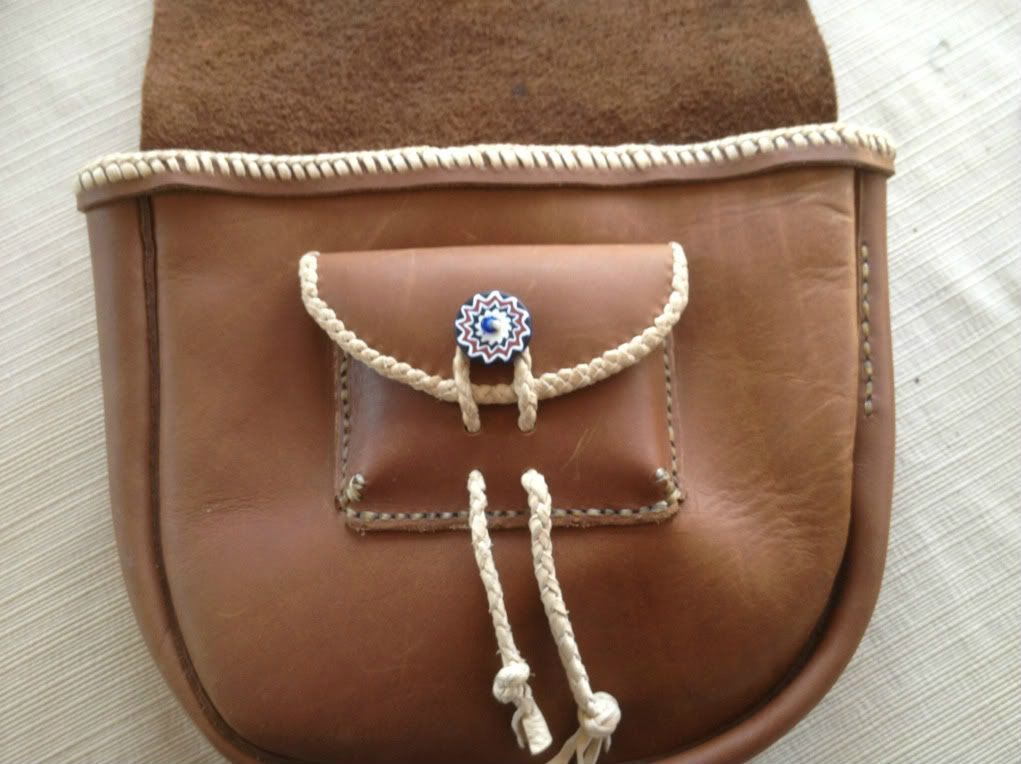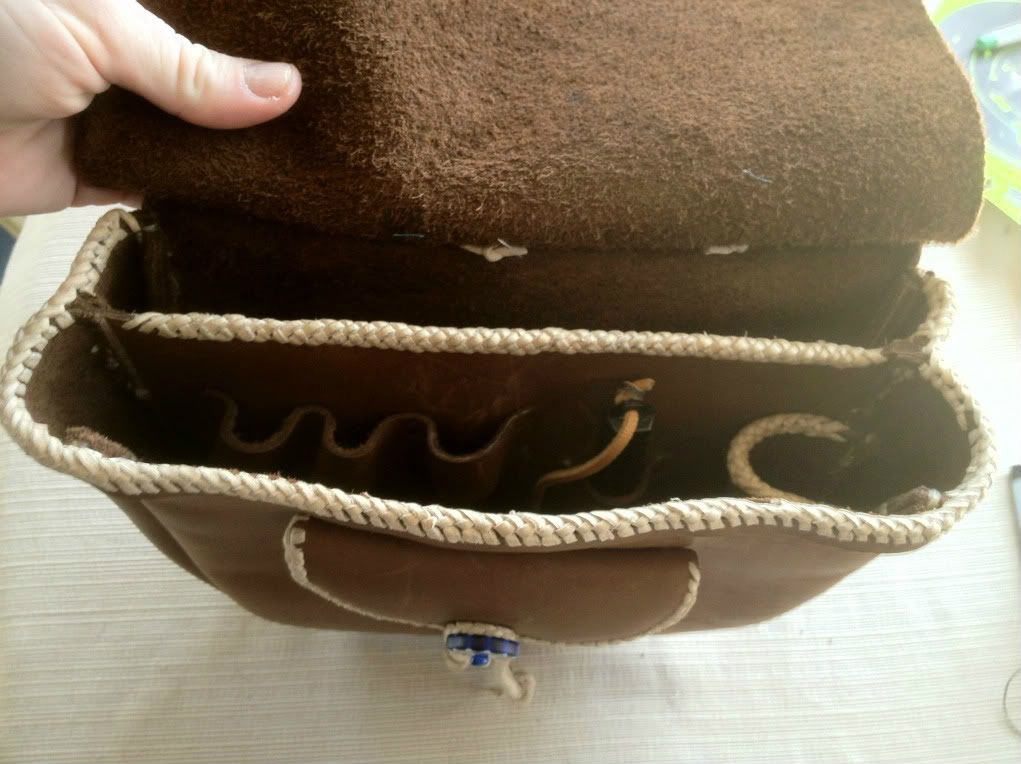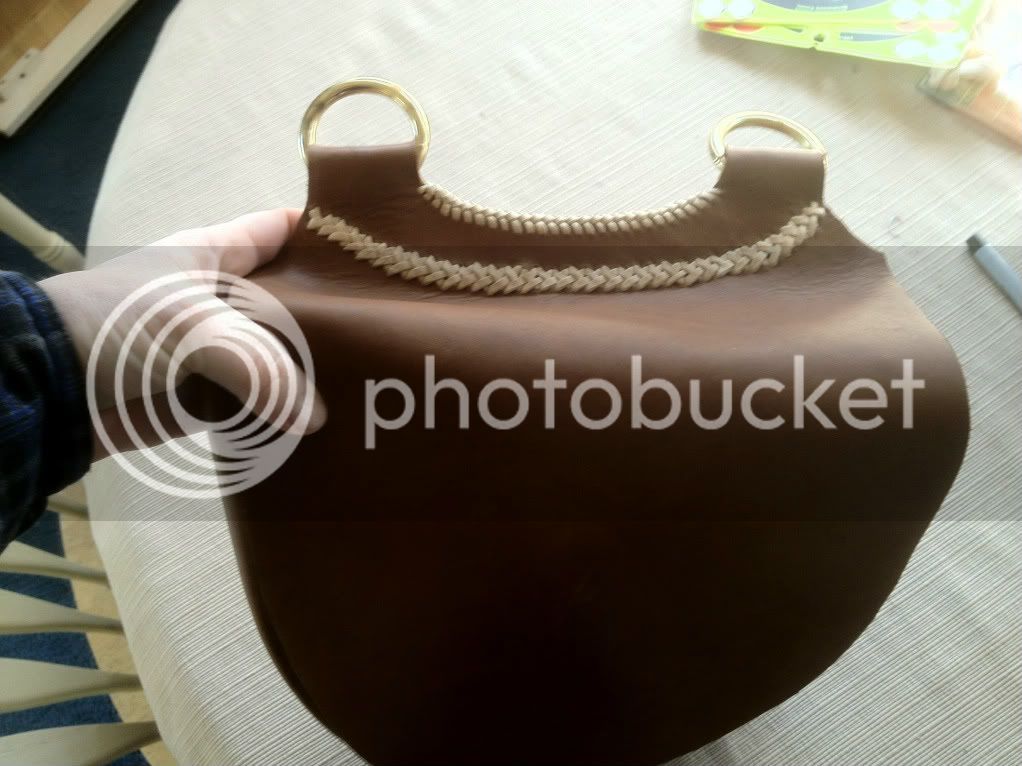This is a shooting bag I'm making for a friend- what's left mainly is to finish the flap, and I'm waiting on specs from my friend before I finish it. I know enough about historical shooting bags to know that some of it is HC, some of it isn't.
As I understand it, the general shape of this bag is correct. The use of welts is correct. The presence of two main pockets is correct. The way the two pockets were done is not, nor is the prevelence of internal pockets, but it's what my friend wanted. The thickness of leather is ok, using pre-dyed hide is ok, and the fact that it's oiled is... I think... ok.
I have two questions for all you more knowledgeable folks!
1- have I missed anything in my understanding of what's HC or not? (I know it's regional and varies by time period, but I'm going more for broad trends here...)
2- The leather braid I used to trim the edges... this is something I've been doing for years, started well before I found muzzleloading and buckskinning. So, I would love to be able to justify using braid as edge trim, decoration, for straps, belts, etc. My documentation resources are kinda limited right now, but I haven't seen anything to support this. Have any of you seen any documentation for this?



As I understand it, the general shape of this bag is correct. The use of welts is correct. The presence of two main pockets is correct. The way the two pockets were done is not, nor is the prevelence of internal pockets, but it's what my friend wanted. The thickness of leather is ok, using pre-dyed hide is ok, and the fact that it's oiled is... I think... ok.
I have two questions for all you more knowledgeable folks!
1- have I missed anything in my understanding of what's HC or not? (I know it's regional and varies by time period, but I'm going more for broad trends here...)
2- The leather braid I used to trim the edges... this is something I've been doing for years, started well before I found muzzleloading and buckskinning. So, I would love to be able to justify using braid as edge trim, decoration, for straps, belts, etc. My documentation resources are kinda limited right now, but I haven't seen anything to support this. Have any of you seen any documentation for this?







